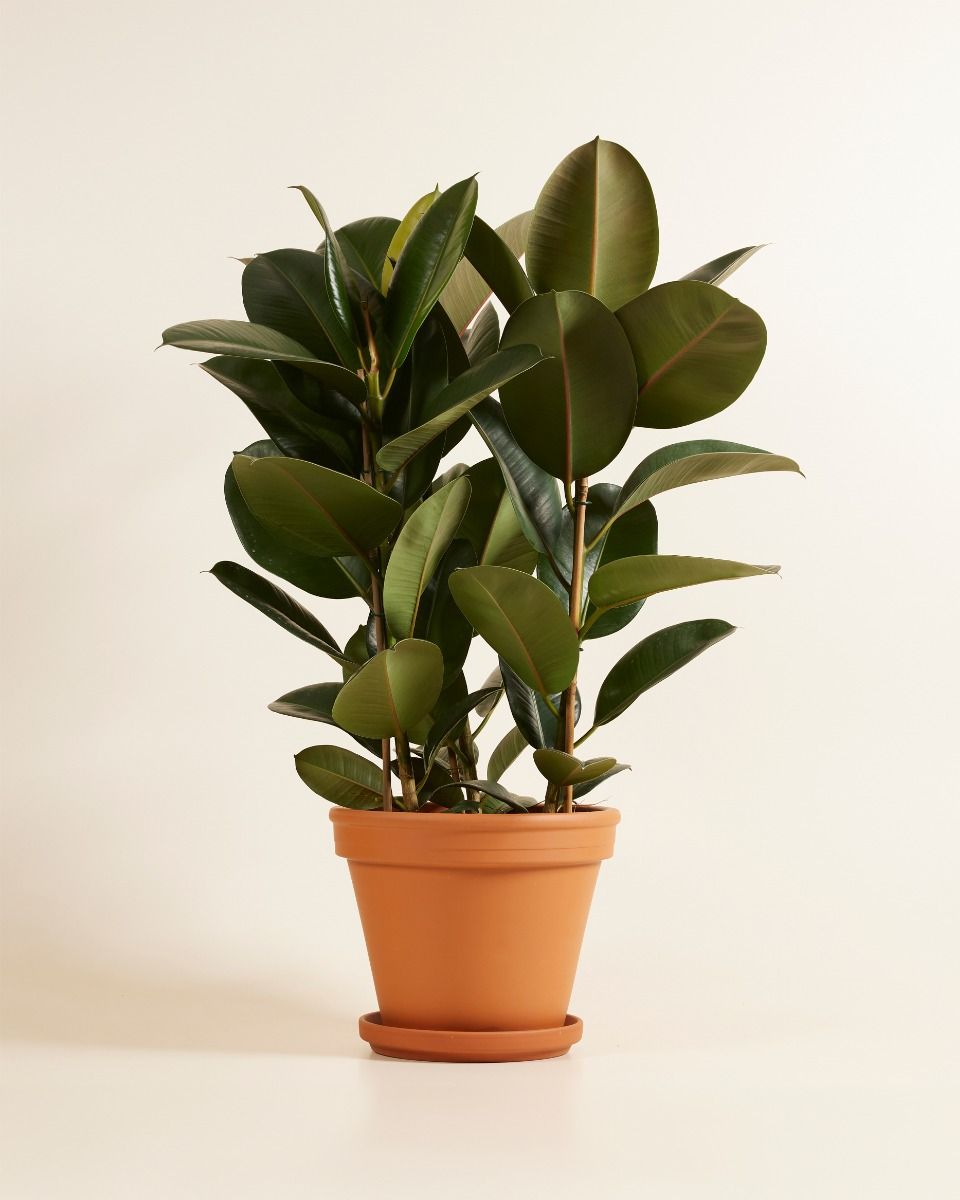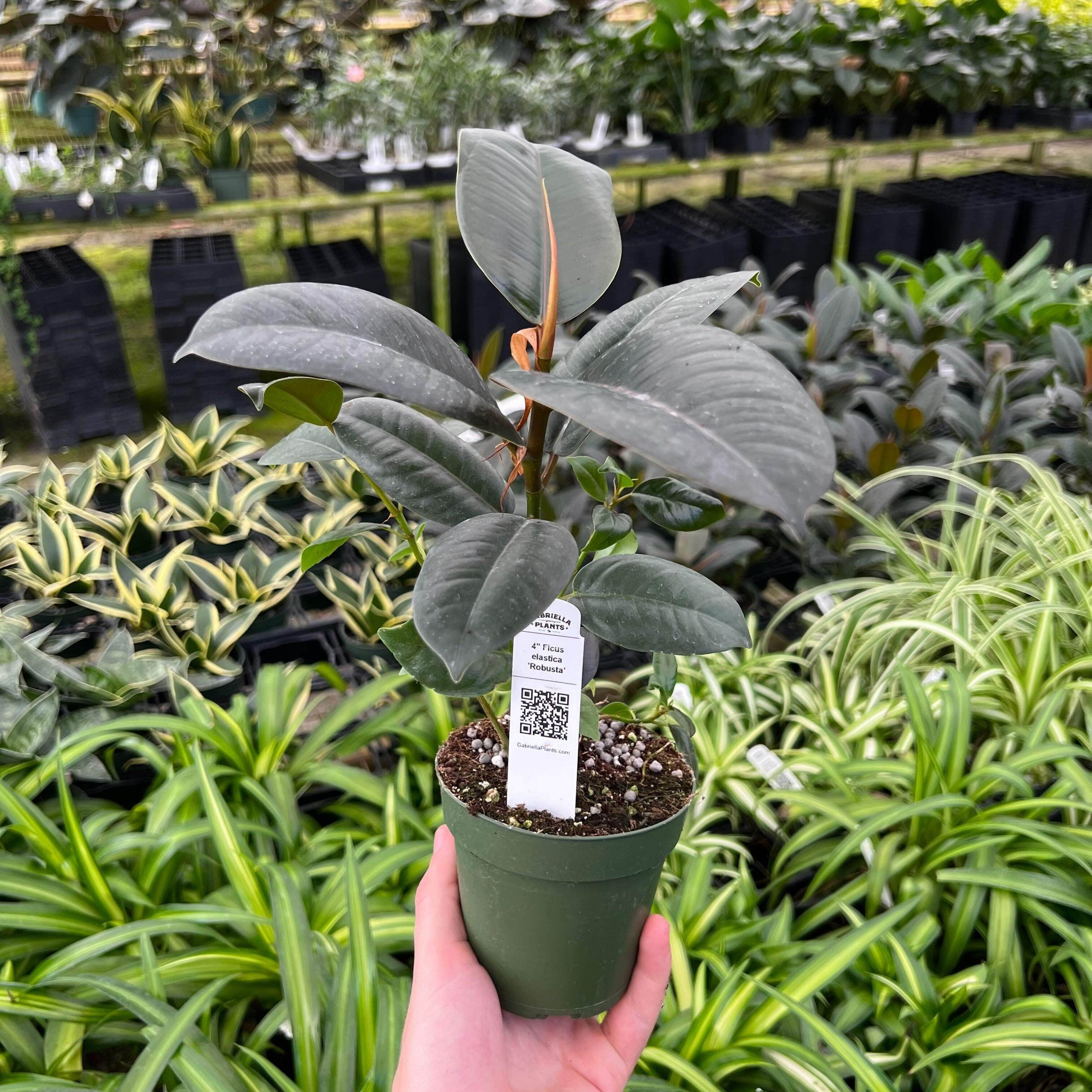Absolutely! Here’s a 3000-word article about Ficus elastica ‘Robusta’, formatted as requested:
The Ficus elastica ‘Robusta’, commonly known as the Rubber Plant, is a popular houseplant celebrated for its glossy, dark green leaves and its remarkable resilience. This robust species, native to Southeast Asia, has found its way into homes and offices worldwide, adding a touch of tropical elegance and air-purifying benefits. This comprehensive guide will delve into the intricacies of caring for this beloved plant, exploring its origins, characteristics, and the best practices for ensuring its thriving health.
Origins and Characteristics
The Ficus elastica, belonging to the Moraceae family, originates from regions spanning from India to Malaysia and Indonesia. Its ‘Robusta’ cultivar is particularly prized for its hardy nature and larger, thicker leaves compared to the species’ other varieties. In its natural habitat, the Rubber Plant can grow into a towering tree, reaching heights of over 100 feet. However, when cultivated indoors, it typically remains a manageable houseplant.
Leaf Morphology

The ‘Robusta’ cultivar is distinguished by its large, oval leaves that are a deep, rich green. These leaves are thick, leathery, and possess a high gloss, contributing to the plant’s aesthetic appeal. Young leaves emerge encased in a reddish sheath, which eventually unfurls to reveal the mature leaf. This sheath, known as the stipule, adds a touch of color and texture to the plant’s growth process.
Growth Habits
Indoors, the Ficus elastica ‘Robusta’ grows at a moderate pace, typically adding several inches of growth each year under optimal conditions. It tends to grow upright, forming a single, sturdy stem when young, and branching out as it matures. Its robust nature makes it relatively forgiving, tolerating some neglect and adapting to various indoor environments.
Air Purification
Like many members of the Ficus genus, the ‘Robusta’ is known for its air-purifying capabilities. It can help remove toxins such as formaldehyde, xylene, and toluene from the indoor air, contributing to a healthier living space. This makes it a valuable addition to homes and offices, especially in urban environments where air quality may be compromised.
Cultivation and Care
Caring for a Ficus elastica ‘Robusta’ is generally straightforward, making it an excellent choice for both novice and experienced plant enthusiasts. However, providing the right conditions is crucial for its healthy growth and longevity.
Light Requirements

The ‘Robusta’ thrives in bright, indirect light. Direct sunlight, especially during the hottest parts of the day, can scorch its leaves. A location near an east or west-facing window is ideal. While it can tolerate some shade, insufficient light can lead to leggy growth and dull leaf color.
Watering
Proper watering is essential for the Rubber Plant’s health. Allow the top inch or two of soil to dry out before watering thoroughly. Overwatering can lead to root rot, a common problem with Ficus plants. During the winter months, when growth slows, reduce watering frequency.
Soil and Potting
A well-draining potting mix is crucial for preventing waterlogging. A blend of standard potting soil, perlite, and peat moss or coconut coir is suitable. Ensure the pot has drainage holes to allow excess water to escape. Repot the plant every two to three years, or when it becomes root-bound, using a slightly larger pot.
Temperature and Humidity
The ‘Robusta’ prefers average room temperatures between 60°F and 80°F (15°C to 27°C). It can tolerate slightly cooler temperatures but is sensitive to frost. While it can adapt to average indoor humidity levels, it benefits from increased humidity, especially during dry winter months. You can increase humidity by misting the leaves, placing a humidifier nearby, or using a pebble tray.
Fertilizing
Feed the Rubber Plant with a balanced liquid fertilizer every two to four weeks during the growing season (spring and summer). Reduce or stop fertilizing during the winter months. Over-fertilizing can lead to salt buildup in the soil, which can harm the plant.
Pruning and Maintenance
Pruning can help maintain the plant’s shape and encourage bushier growth. Use clean, sharp shears to trim the top of the plant or remove any leggy stems. Pruning can also stimulate the plant to branch out, creating a fuller appearance. Wipe the leaves with a damp cloth to remove dust and maintain their glossy appearance.
Common Issues and Solutions
While the Ficus elastica ‘Robusta’ is relatively hardy, it can encounter several common issues. Understanding these problems and their solutions is crucial for maintaining a healthy plant.
Leaf Drop
Leaf drop is a common issue that can be caused by various factors, including overwatering, underwatering, sudden temperature changes, or insufficient light. Ensure you are providing the plant with appropriate care and avoid drastic changes in its environment.
Root Rot
Root rot is typically caused by overwatering. Symptoms include yellowing leaves, wilting, and a foul odor from the soil. To prevent root rot, allow the soil to dry out between waterings and use a well-draining potting mix.
Pest Infestations
The ‘Robusta’ can be susceptible to pests such as spider mites, mealybugs, and scale insects. Regularly inspect the plant for signs of infestation and treat promptly with insecticidal soap or neem oil.
Leggy Growth
Leggy growth is often a result of insufficient light. Ensure the plant receives adequate bright, indirect light to encourage compact growth. Pruning can also help promote bushier growth.
Brown Leaf Tips
Brown leaf tips can be caused by dry air, over-fertilizing, or inconsistent watering. Increase humidity, reduce fertilizer application, and ensure consistent watering to address this issue.
Propagation
Propagating the Ficus elastica ‘Robusta’ is a relatively straightforward process, allowing you to create new plants from cuttings.
Stem Cuttings
The most common method of propagation is through stem cuttings. Select a healthy stem and cut a section about 4-6 inches long. Remove the lower leaves, leaving only a few at the top. Dip the cut end in rooting hormone and plant it in a pot filled with moist potting mix. Cover the pot with a plastic bag or place it in a propagator to maintain humidity. Keep the cutting in a warm, bright location and water regularly. Roots should develop within a few weeks.
Air Layering
Air layering is another effective method of propagation. Select a healthy stem and make a shallow cut about halfway through the stem. Wrap the cut area with moist sphagnum moss and cover it with plastic wrap. Secure the plastic wrap with tape or string. Roots will develop within a few weeks. Once roots are visible, cut the stem below the rooted area and plant it in a pot.
Varieties and Related Species
While the ‘Robusta’ is a popular cultivar, other varieties and related species of Ficus elastica offer diverse appearances and characteristics.
Ficus Elastica ‘Variegata’
This variety is known for its variegated leaves with creamy white or yellow margins. It adds a vibrant touch to indoor spaces and requires similar care to the ‘Robusta’.
Ficus Elastica ‘Tineke’
The ‘Tineke’ cultivar features leaves with a mix of green, white, and pink hues, creating a striking visual appeal. It prefers bright, indirect light to maintain its vibrant coloration.
Ficus Lyrata (Fiddle Leaf Fig)
While not a variety of Ficus elastica, the Ficus lyrata is a closely related species known for its large, fiddle-shaped leaves. It requires similar care but is generally considered more challenging to maintain.
Ficus Benjamina (Weeping Fig)
Another popular Ficus species, the Ficus benjamina, features small, glossy leaves and a weeping growth habit. It is known for its sensitivity to environmental changes.
Conclusion
The Ficus elastica ‘Robusta’ stands as a testament to the enduring appeal of resilient and beautiful houseplants. Its glossy, dark green leaves, coupled with its air-purifying capabilities and relatively easy care, make it a favorite among plant enthusiasts. By understanding its origins, characteristics, and care requirements, you can ensure your Rubber Plant thrives, adding a touch of natural elegance to your indoor environment. Whether you are a seasoned plant collector or a novice gardener, the ‘Robusta’ is a rewarding addition to any home or office, bringing a slice of tropical paradise indoors.

